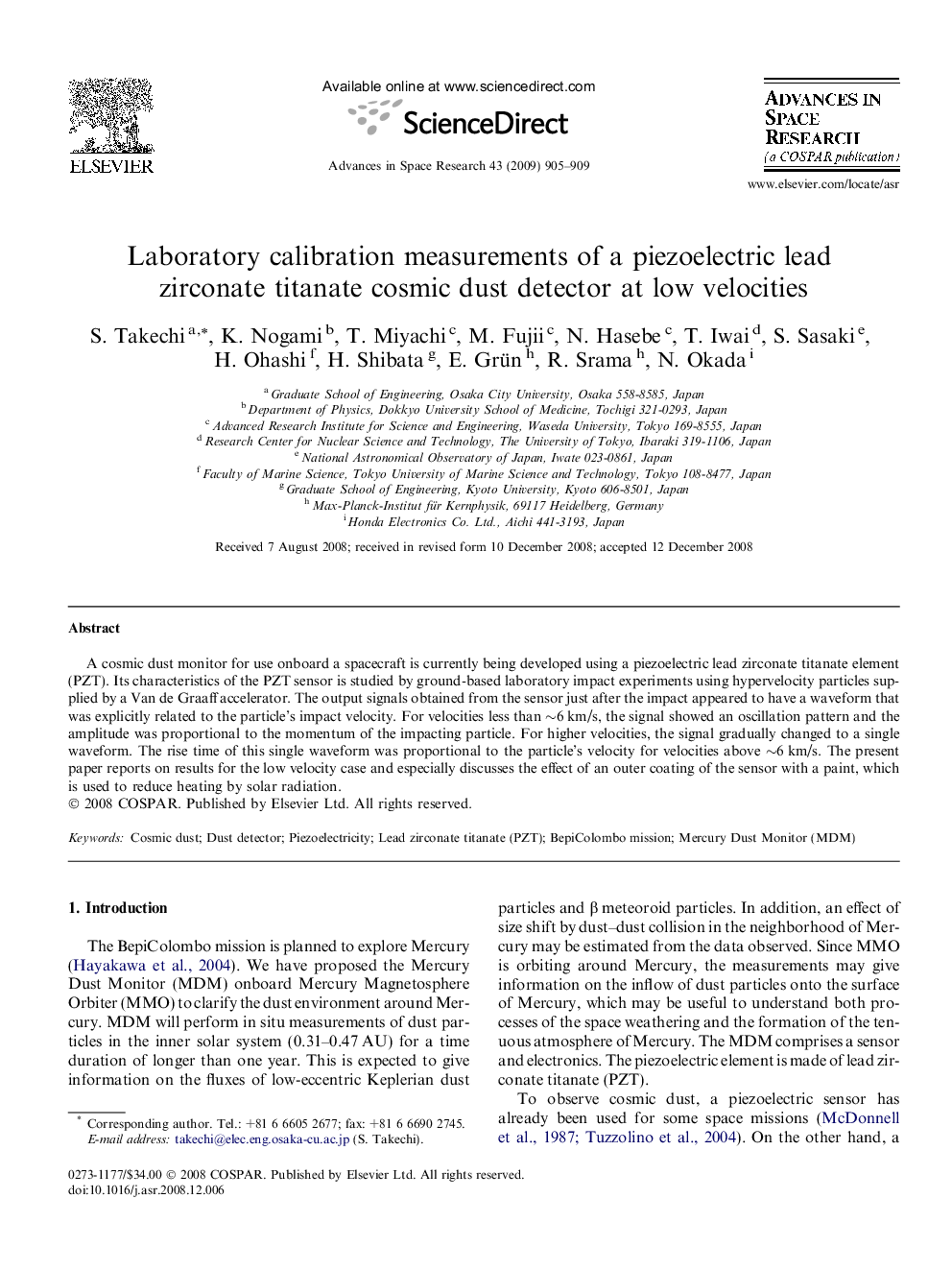| Article ID | Journal | Published Year | Pages | File Type |
|---|---|---|---|---|
| 1767227 | Advances in Space Research | 2009 | 5 Pages |
A cosmic dust monitor for use onboard a spacecraft is currently being developed using a piezoelectric lead zirconate titanate element (PZT). Its characteristics of the PZT sensor is studied by ground-based laboratory impact experiments using hypervelocity particles supplied by a Van de Graaff accelerator. The output signals obtained from the sensor just after the impact appeared to have a waveform that was explicitly related to the particle’s impact velocity. For velocities less than ∼6 km/s, the signal showed an oscillation pattern and the amplitude was proportional to the momentum of the impacting particle. For higher velocities, the signal gradually changed to a single waveform. The rise time of this single waveform was proportional to the particle’s velocity for velocities above ∼6 km/s. The present paper reports on results for the low velocity case and especially discusses the effect of an outer coating of the sensor with a paint, which is used to reduce heating by solar radiation.
